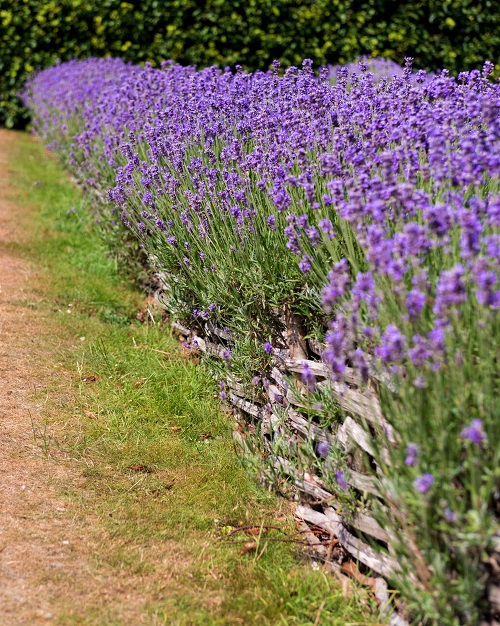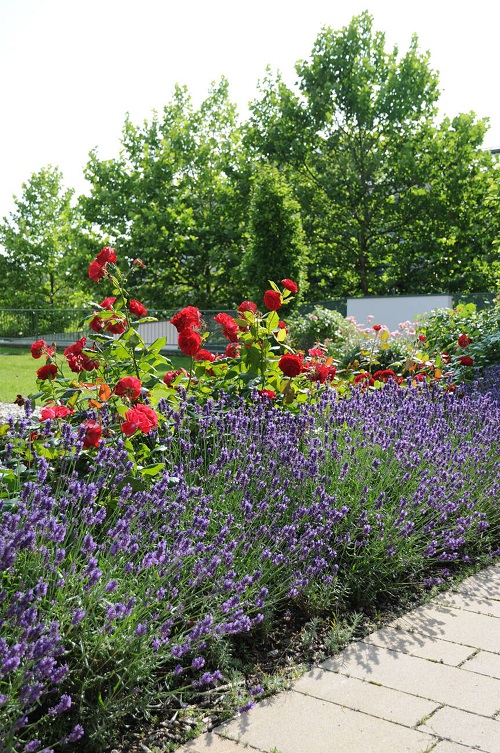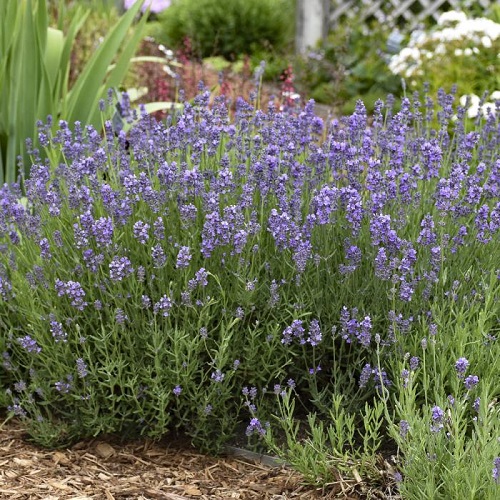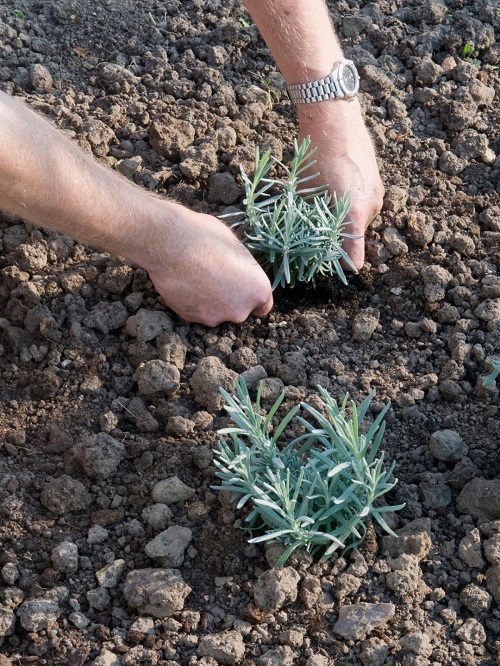Everyone’s raving about Lavender Hedges! From beauty to bountiful benefits, we tell you why you should have one in your garden.

Lavender has been trending as the most sought-after hedge plant in the last few years in the gardening world. Why? Because there’s much more to this timeless classic than meets the eye, or nose, for that matter! We’re pretty sure this article will convince you to grow lavender as a hedge in your garden. Tune in to find out!
Why Everyone Should Plant a Lavender Hedge
1. They’re Absolutely Gorgeous

Let’s start with the obvious—lavenders look beautiful. With lilac and purple clusters of blooms that grow on long spikes, these herbs combine floral charm with the practical benefits of hedges.
Lavenders provide perfect borders to your garden, pathways, and entrances. Even if the flowers are spent, its foliage is still lush and stunning. As a hedge, this Mediterranean shrub will draw all eyes to your garden!
2. Fragrant and Soothing
You’ll smell it before you even see it! The flowers of this perennial herb exude a strong, soothing fragrance that is a delicate blend of floral, earthy, woody, and herbal. This is why lavender is a key ingredient in products like soaps, perfumes, and room fresheners.
Bet you didn’t know its leaves and stems are fragrant too! So after its pretty summer blooms perish, you can still enjoy a gentle fragrance lingering in your garden.
3. Keeps Pests Away

Lavender hedges are great at shielding your garden from pests. This mint family member has essential oils that deter all kinds of pesky creatures, such as mosquitoes, fleas, flies, and moths, as well as larger ones like rabbits and deer. They also pair well with other herbs like marigolds, rosemary, garlic, and sage.
4. Lavender Hedges Attract Pollinators

Now, while lavender bugs bad bugs, its purple nectar-filled blooms also lure in the best pollinators—think bees and butterflies! In fact, honey made from lavender nectar or pollen tastes different, making it a beekeeper’s favorite. Bees can easily land on the flower and access the nectar while at the same time picking up pollen on their furry bodies.
And hedges provide the height and depth needed to keep these pollinators safe and away from the high-traffic bits of your garden!
5. Protects from Soil Erosion
Grow a lavender hedge if you live in a storm-and wind-prone area on a slope, where the risk of the topsoil washing away is greater. Dense, mature lavender hedges help protect the soil from erosion and winds that may hurt and topple delicate vegetation.
Lavender roots spread out quite widely and help anchor the soil. Of course, a combination of lavender and other plants will be better suited for severe wind and erosion issues.
6. It’s Super Easy to Maintain

Lavender hedges are a novice gardener’s dream. Excluding the occasional watering and pruning, they need little babysitting. Lazy gardeners and busy bees will love how beautiful and efficient their garden turns out amidst lavender hedges with so little effort!
This edible herb thrives in both full and partial sun and can tolerate various soil types.
7. Did We Say Edible?

Aroma, beauty, and now flavor! Is there anything lavender cannot do? This delicious herb is super popular for its culinary uses! From jellies to meats, lavender’s edible qualities warrant a separate article altogether.
Slightly sweet, with a hint of mint and citrus, lavender pairs wonderfully with citrus fruits and berries or as a garnish to a resplendent charcuterie board. It also perfectly flavors savory dishes like lamb or chicken roast and can be combined with herbs like rosemary.
To harvest your lavender hedge, focus on the flower spikes. Cut them in the morning when the essential oils are at their peak. You can use fresh flowers directly or dry them for later use. Just remember, a little goes a long way, so start with a light hand and adjust to taste.
How to Grow a Lavender Hedge?

As mentioned before, growing lavender is easy. Our guide provides all the information on growing and caring for the plant.
Spring is the best time to plant the young cuttings into the soil. Opt for English lavender (Lavandula angustifolia) if you live in a cold climate and are looking for edible uses for its hardiness and compact growth. If your garden is in a warm Mediterranean climate, go for French or Spanish lavender!
Space your plants about a foot apart for a dense hedge. Remember, lavender loves to be dry, so resist the urge to overwater.
Avoid heavy fertilizing to prolong its healthy growth. By the way, it’s better not to fertilize most of your herbs too much, as it can mess with their flavor and growth. With a little TLC, your lavender hedge will become a stunning and fragrant focal point in your garden for years to come.
That’s it! All that’s left for you to do now is grow your own lavender hedge and reap its benefits. Let us know how it goes for you in the comments below!


